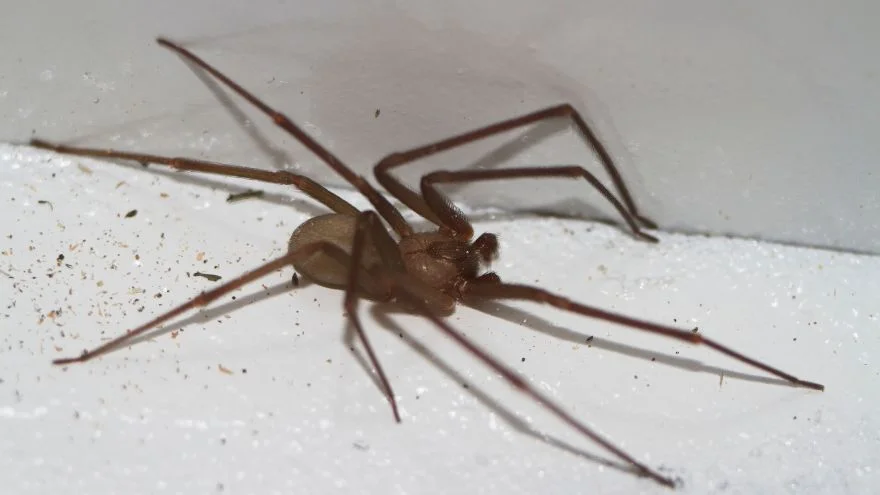Wisconsin is a midwestern state in the United States of America, with a land area of 34.8 million acres and a water area of 1.13 million acres, made up of well-outlined landscapes and eye-catching coastlines.
It is well known for its peculiar tourist attractions and aesthetically pleasing lakes.
Wisconsin is a beautiful state, no doubt, home to so many animal species; it is also home to some of the highest densities of dangerous predators in the United States.
The most dangerous animals in Wisconsin are among the 700+ wildlife species that live in the Midwestern state. They include poisonous spiders, bears, venomous snakes, etc.; you should avoid them because they can effortlessly snap life out of their prey.
This article will reveal the top 10 Wisconsin’s deadliest animals that you should be wary of when exploring the state’s rich landscapes.
What are the Most Dangerous Animals in Wisconsin?
1. Brown Recluse Spider

- Scientific name: Loxosceles reclusa
- Classification: Arachnid
- Habitat: Mostly in human habitations with low humidity, which include crevices, sheds, ceilings, woodpiles, etc.
- Diet: Carnivore
- Conservation Status: Least concern
The Brown Recluse Spider doesn’t look physically intimidating, with a length of 6 to 20 millimeters, about the size of a coin.
This brownish spider, with slender legs, has two significant features that distinguish it from other species.
These features include a dark violin-shaped marking on its cephalothorax and a semicircular paired arrangement of six eyes.
Bites from this venomous spider can become extremely lethal if left untreated for a long time because the toxin released can cause skin necrosis due to the rapid formation of ulcers.
They can expose the victim to infections and risk anaphylactic shock.
2. Rattlesnakes
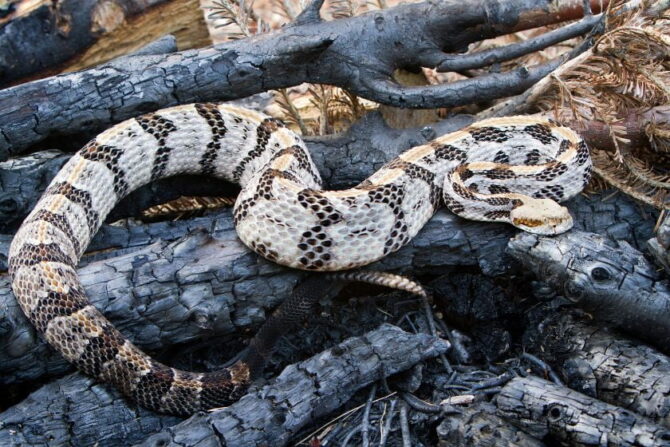
- Scientific name: Crotalus
- Classification: Reptiles
- Habitat: Nocturnal animals inhabit swamps, lakes, forests, deserts, etc.
- Diet: Carnivores.
- Conservation Status: Near threatened
Most people are not fans of snakes, and the rattlesnake is considered one of the deadliest of the twenty-one snakes found in Wisconsin.
Topping the list of highly gruesome snakes, you shouldn’t cross paths with are the Timber Rattlesnake and Eastern Massasauga rattlesnake.
A bite from this venomous snake is exceptionally lethal and often needs quick medical intervention.
Rattlesnake venom has cytotoxic and neurotoxic properties, which describes its ability to cause moderate to severe bleeding, tissue necrosis, and nervous system malfunction.
If left untreated, the victim could become paralyzed and die within two to three days.
3. Ticks

- Scientific name: Ixodida
- Classification: Arachnida
- Habitat: Woody areas, between tall grasses, under leaves.
- Diet: Parasitic.
- Conservation Status: Vulnerable
Ticks are minute, blood-sucking parasitic creatures, ranging from 15 mm to about 30 mm.
Wisconsin’s most abundant species are wood ticks (American Dog Ticks) and deer ticks (Black Legged Ticks).
Ticks transmit lethal diseases, especially Lyme disease, the most common tick-borne ailment in Wisconsin.
Tick bites are usually hard to detect because it remains painless until after feeding on the prey to their satisfaction.
Later, the site becomes itchy, gives off a burning sensation, becomes red, and gives off pain radiating to the joint.
Symptoms may include fever, headache, weakness, vomiting, and shortness of breath (dyspnea).
4. Black Widow Spider
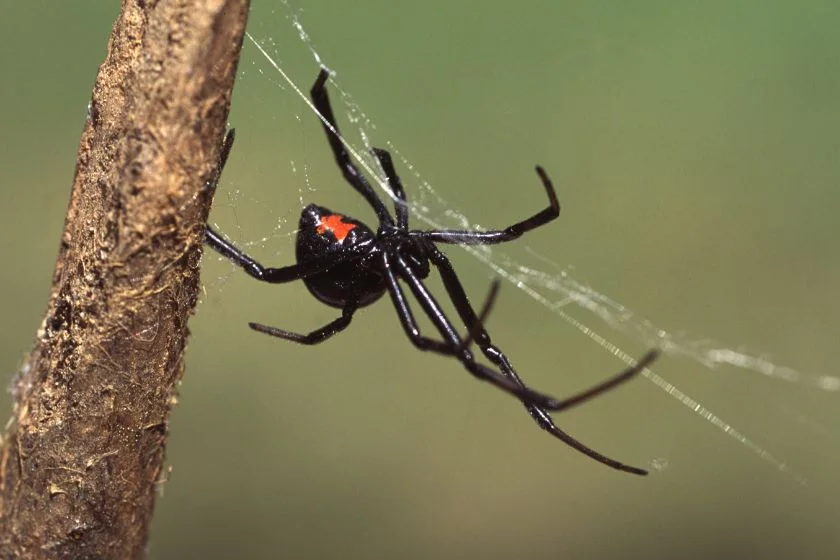
- Scientific name: Latrodectus
- Classification: Arachnid
- Habitat: Wood piles, low shrubs, and majorly dark undisturbed areas.
- Diet: Carnivores
- Conservation Status: Least concern
This spider doesn’t just have a unique name, but it is one of the deadliest spiders in the world.
Their poison is about fifteen times more lethal than that of a rattlesnake.
Their venom also contains a chemical called alpha-latrotoxin, known to inundate the immune system and cause severe pain.
The black widow spider is about half an inch long, and you can quickly identify them due to the presence of red markings giving off an hourglass figure.
You should note that only the female can produce potentially lethal venom.
Bites from this spider are characterized by painful swelling, muscle spasms, nausea, rapid breathing, and severe stomach aches.
5. Gray Wolves
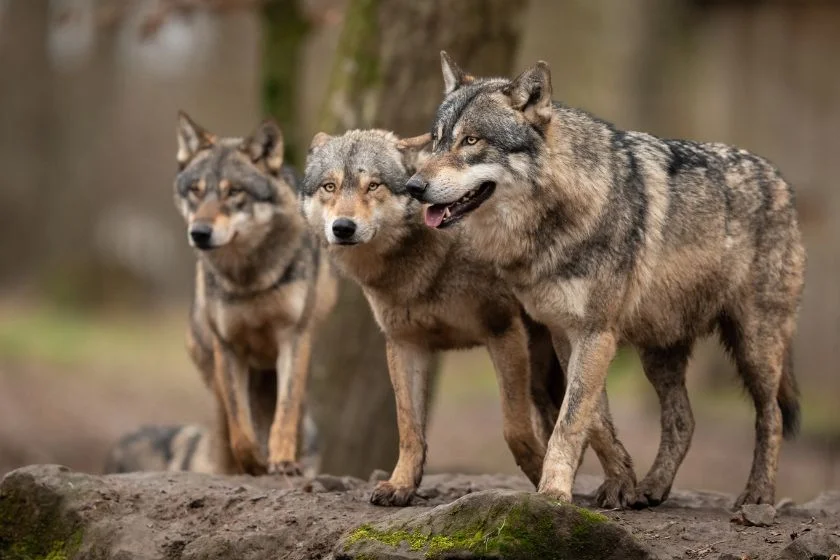
- Scientific name: Canis Lupus
- Classification: Mammal
- Habitat: Grassland, forests, mountains, and deserts.
- Diet: Carnivores
- Conservation Status: least concern
Gray wolves, also known as timber wolves, are highly social canine predators that move in organized packs.
The Department of Natural Resources data shows that the population of wolves in Wisconsin has increased to about four times its initial population over the past twenty years to about 1,100.
Recently, hunting activities have increased in Wisconsin, which can endanger gray wolves in Wisconsin.
As a result, gray wolves are not uncommon in Wisconsin.
However, these wild dog species aren’t aggressive towards human beings, but it is wise to keep a safe distance from these potential predators.
6. Cougars

- Scientific name: Puma Concolor
- Classification: Mammal
- Habitat: Glassland, forests, mountains, low tropical forests, and deserts.
- Diet: Carnivores
- Conservation Status: Vulnerable
The Cougars are a large cat species whose colors range from yellowish to greyish brown.
The cougar is known to have a terrible sense of smell but excellent vision at night.
Despite their generous size, they surprisingly do not roar but purr.
These vast cats live somewhat lonesome lives and spend their time mating and hunting about once a week.
When they feel threatened, they could bite. Though they are rarely dangerous, keeping a safe distance from them is best.
7. White-tailed Deer
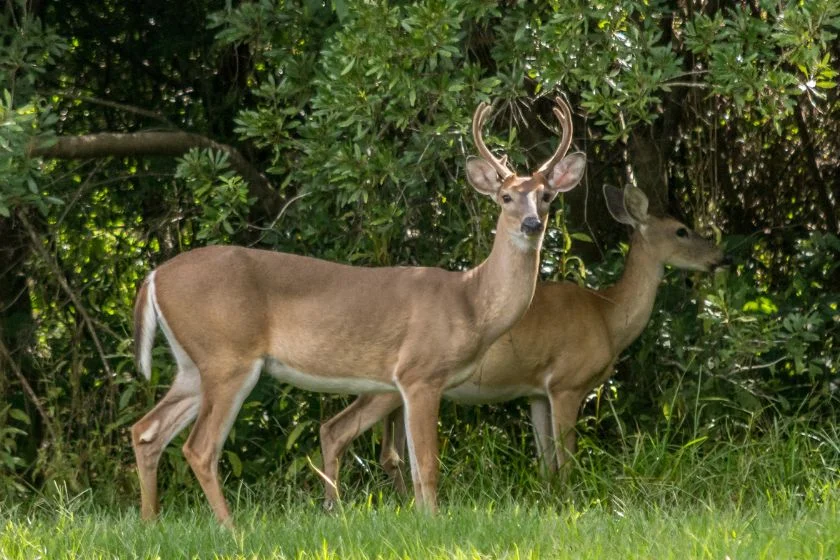
- Scientific name: Odocoileus virginianus
- Classification: Mammal
- Habitat: Hardwood, pasture lands, and croplands.
- Diet: Herbivores
- Conservation Status: Least Concern
The presence of the White-tailed deer on this list might come off as a shocker.
This animal is considered enchanting and adorable, so what makes it dangerous? Severe accidents often result from cars colliding with these charming animals.
White-tailed deers cause economic loss to farmers when they feed on cash crops in their high numbers.
Consequently, growing certain crops is nearly impossible unless farmers adopt stringent measures.
8. Mosquitoes

- Scientific name: Culicidae
- Classification: Insecta
- Habitat: Forest, marshes, and tall grasses.
- Diet: Omnivorous
- Conservation Status: Not extinct
As belittling as they seem, mosquitoes are one of Wisconsin’s most lethal animals.
Apart from the highly irritating bumps they leave on the skin, they can transmit several fatal diseases such as malaria, and the West Nile virus, which killed about four Wisconsin residents in 2017.
These small-looking insects are notorious for their annoying bugs.
Their bites are usually slightly painful and discomforting as their use their sharp mouths to Pierce the human skin and feed on blood.
Diseases such as malaria, Dengue, and the zika virus.
9. Assassin Bug
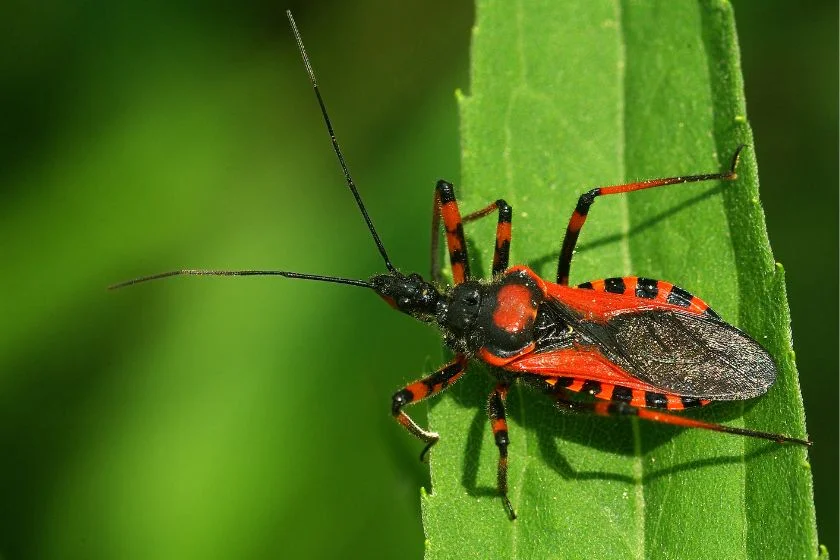
- Scientific name: Reduviidae
- Classification: Hemiptera
- Habitat: Rain forest, rocky areas
- Diet: Carnivores
- Conservation Status: Not extinct
This is an orange-red insect with an elongated body and narrow head. Their sizes range from 5 to 40 mm.
Some species are terrestrial predators, while others are aquatic predators. They have sturdy bodies and curved rostrums.
Assassin bugs are assassins that attack and kill by stabbing their prey to death. They commonly prey on ants.
Sometimes they attack humans when they feel threatened, and a single jab from this bug is extremely painful.
10. Bears

- Scientific name: Ursidae
- Classification: Mammals
- Habitat: Dens made of woodpiles
- Diet: Omnivorous
- Conservation Status: Least concern
The list of the most dangerous animals in Wisconsin would be incomplete without bears, the state’s top predators.
Wisconsin is a favorable habitat to a significant population of black bears, numbering over twenty-four thousand black bears.
Bears can be pretty aggressive and lunge at their prey without mercy.
Most bear attacks usually result from man’s interference during clashes between dogs and bears. To save the dog, the man usually becomes the prey instead.
Wisconsin Wildlife Safety Tips
When allowed to observe and understand nature and its inhabitants closely, it is essential to keep specific rules at heart that can save you and nature safe.
Here are some tips to fulfill that:
- Avoid feeding or leaving leftovers where an animal can reach them. The animal might make the mistake of relating humans and food as similar and spur it to attack.
- Keep a reasonable distance while taking photos or observing the animals. The too close proximity between you and the animals could make them feel threatened, triggering an attack.
- If you’re with a dog, ensure it stays on a leash and closes beside you. Wild animals tend to get irritated by dogs easily.
- Don’t try to surprise a mother with her child or try to intimidate an animal. Most wildlife ferociously defends their young. Don’t try to play with or carry their young.
- Avoid littering the surrounding with food waste, paper bags, plastics, cartons, fruit skins, etc.
- Putting on clothing that covers your entire body helps. Wisconsin has numerous bugs, ticks, and mosquitoes. Protect yourself by wearing clothes that cover your entire body.
Frequently Asked Questions
What are the deadliest snakes in Wisconsin?
The timber rattlesnake and the Eastern Massasauga are two of the deadliest snakes in this American date. These two snakes are both venomous and predators.
What is the official animal of Wisconsin?
The American badger is the official animal of Wisconsin. This animal was the official animal of Wisconsin in 1957.
What zoos are located in Wisconsin?
Wisconsin has different zoos where you get to see animals that are native and non-native to the state. Some of the zoos include Henry Vilas zoo, Milwaukee zoo, Racine zoo, Menominee zoo, etc.
Which animals are Endangered in Wisconsin?
Wisconsin, just like other American states, has animals that are endangered. Some include the Sheepnose, the Karner blue butterfly, the whooping crane, and the rusty patched bumble bee.
Conclusion
Exploring nature can be both therapeutical and aesthetically pleasing. But it’s crucial to adopt maximum caution amid wildlife.
The beautiful plains of Wisconsin are no exception, so try not to be careless about your safety.
So, following every guideline and keeping your distance from these most dangerous animals in Wisconsin is vital.
